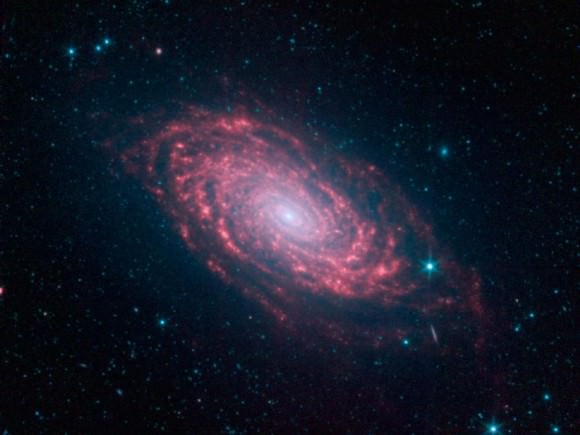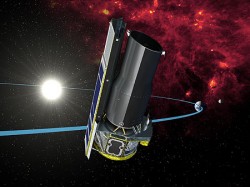After 10 years in space — looking at so many galaxies and stars and other astronomy features — the Spitzer Space Telescope is being deployed for new work: searching for alien worlds.
The telescope is designed to peer in infrared light (see these examples!), the wavelength in which heat is visible. When looking at infrared light from exoplanets, Spitzer can figure out more about their atmospheric conditions. Over time, it can even detect brightness differences as the planet orbits its sun, or measure the temperature by looking at how much the brightness declines when the planet goes behind its star. Neat stuff overall.
“When Spitzer launched back in 2003, the idea that we would use it to study exoplanets was so crazy that no one considered it,” stated Sean Carey of NASA’s Spitzer Science Center, which is at the California Institute of Technology. “But now the exoplanet science work has become a cornerstone of what we do with the telescope.”
Of course, the telescope wasn’t designed to do this. But to paraphrase the movie Apollo 13, NASA was interested in what the telescope could do while it’s in space — especially because the planet-seeking Kepler space telescope has been sidelined by a reaction wheel problem. Redesigning Spitzer, in a sense, took three steps.

Fixing the wobble: Spitzer is steady, but not so steady that it could easily pick out the small bit of light that an exoplanet emits. Engineers determined that the telescope actually wobbled regularly and would wobble for an hour. Looking into the problem further, they discovered it’s because a heater turns on to keep the telescope battery’s temperature regulated.
“The heater caused a strut between the star trackers and telescope to flex a bit, making the position of the telescope wobble compared to the stars being tracked,” NASA stated. In October 2010, NASA decided to cut the heating back to 30 minutes because the battery only needs about 50 per cent of the heat previously thought. Half the wobble and more exoplanets was more the recipe they were looking for.

Repurposing a camera: Spitzer has a pointing control reference sensor “peak-up” camera on board, which originally gathered up infrared light to funnel to a spectrometer. It also calibrated the telescope’s star-tracker pointing devices. The same principle was applied to infrared camera observations, putting stars in the center of camera pixels and allowing a better view.
Remapping a camera pixel: The scientists charted the variations in a single pixel of the camera that showed them which were the most stable areas for observations. For context, about 90% of Spitzer’s exoplanet observations are about a 1/4 of a pixel wide.
That’s pretty neat stuff considering that Spitzer’s original mission was just 2.5 years, when it had coolant on board to allow three temperature-sensitive science instruments to function. Since then, engineers have set up a passive cooling system that lets one set of infrared cameras keep working.
Source: NASA

